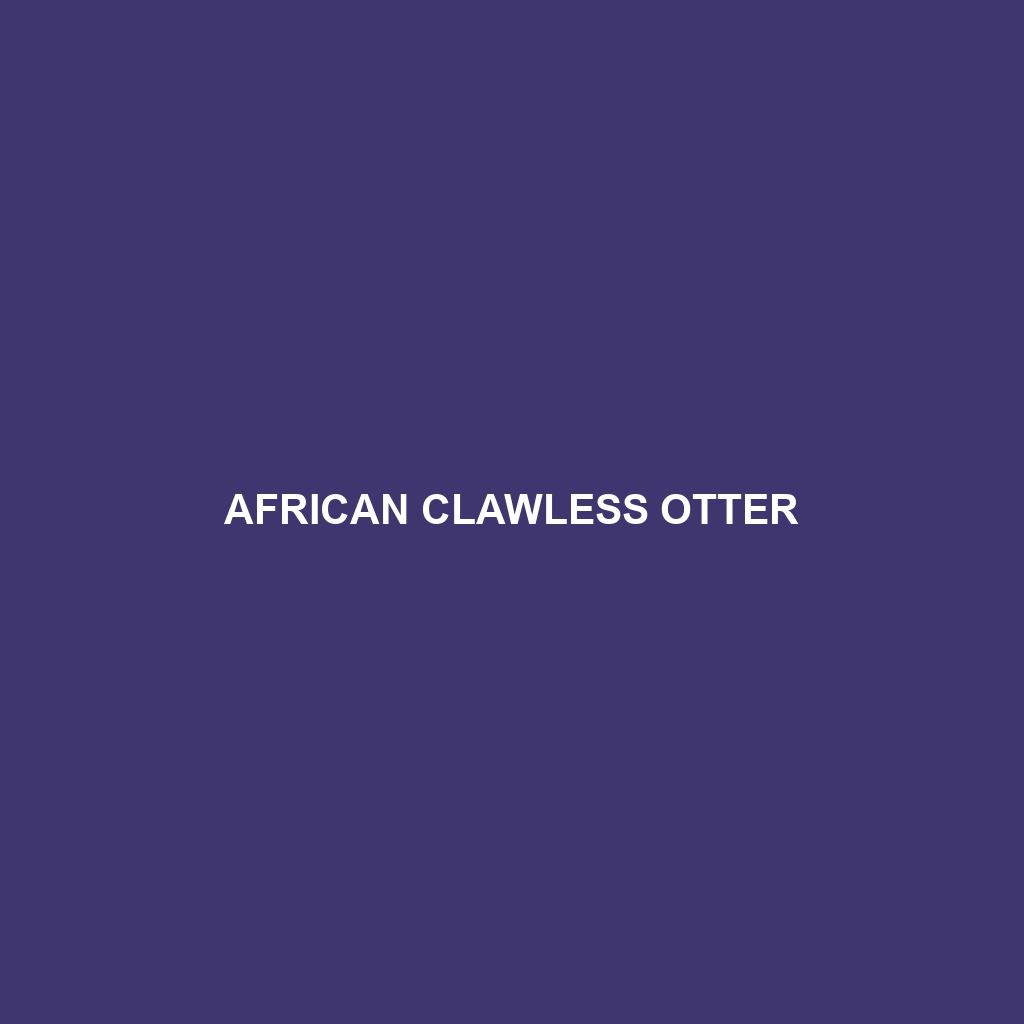Species Description: African Clawless Otter
Common Name: African Clawless Otter
Scientific Name: Aonyx capensis
Habitat:
The African Clawless Otter is primarily found in sub-Saharan Africa. Its habitats include rivers, lakes, and coastal regions, particularly in areas with abundant freshwater sources. This species thrives in wetlands, swamps, and estuaries, where they can easily hunt and navigate through their preferred environments.
Physical Characteristics:
African Clawless Otters are medium-sized mammals, measuring between 0.8 to 1.3 meters in length and weighing approximately 9 to 30 kilograms. Their fur is typically a dark brown or gray color, with lighter underparts. One of the most distinctive features of this otter is the absence of prominent claws on their feet, which aids in swimming. Their streamlined bodies and webbed feet make them excellent swimmers, while their large eyes enable them to see well underwater.
Behavior:
This species is known for its social behavior, often found in small family groups. African Clawless Otters are diurnal, engaging in various activities such as playing, grooming, and hunting during daylight hours. They are also excellent divers, capable of holding their breath for up to 2 minutes while foraging for food.
Diet:
The African Clawless Otter has a diverse diet primarily consisting of fish, crustaceans, and mollusks. They are known to hunt freshwater crabs and will sometimes consume small mammals and birds. Their feeding habits are crucial for controlling prey populations, maintaining a balanced ecosystem.
Reproduction:
Breeding typically occurs during the wet season, with females giving birth to a litter of one to three pups after a gestation period of about 60 to 70 days. The young are weaned after about 3 months and remain dependent on their mothers for up to a year as they learn to hunt and adapt to their environment.
Conservation Status:
Currently, the African Clawless Otter is listed as Least Concern by the IUCN, although habitat loss and pollution pose significant threats to their populations. Conservation efforts are crucial to maintain their habitats and ensure their future.
Interesting Facts:
Did you know that the African Clawless Otter can dive depths of up to 30 meters while searching for food? They also use their sensitive whiskers to detect movements and catch prey in murky waters.
Role in Ecosystem:
The African Clawless Otter plays a vital role in its ecosystem, acting as a predator of fish and invertebrates. This predatory behavior helps regulate populations of these species, contributing to the health and stability of aquatic environments. Their presence in an ecosystem is often an indicator of a healthy habitat.
